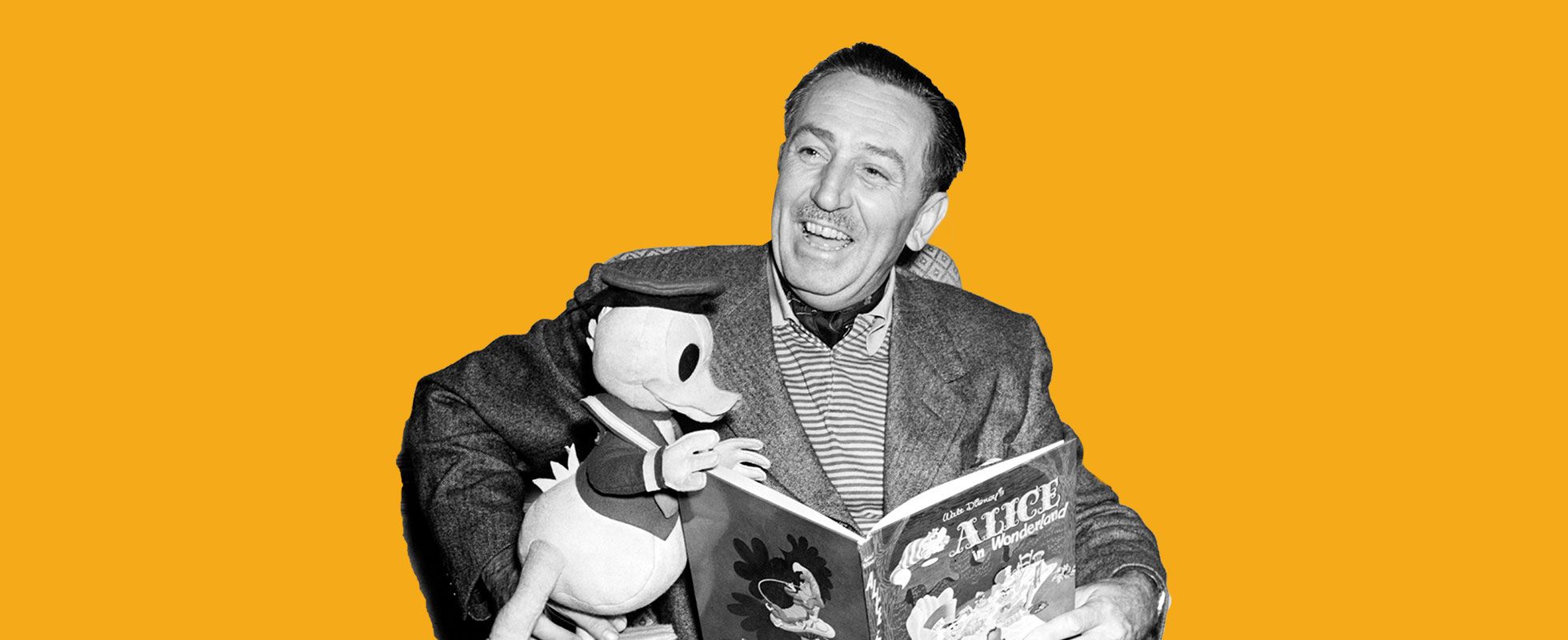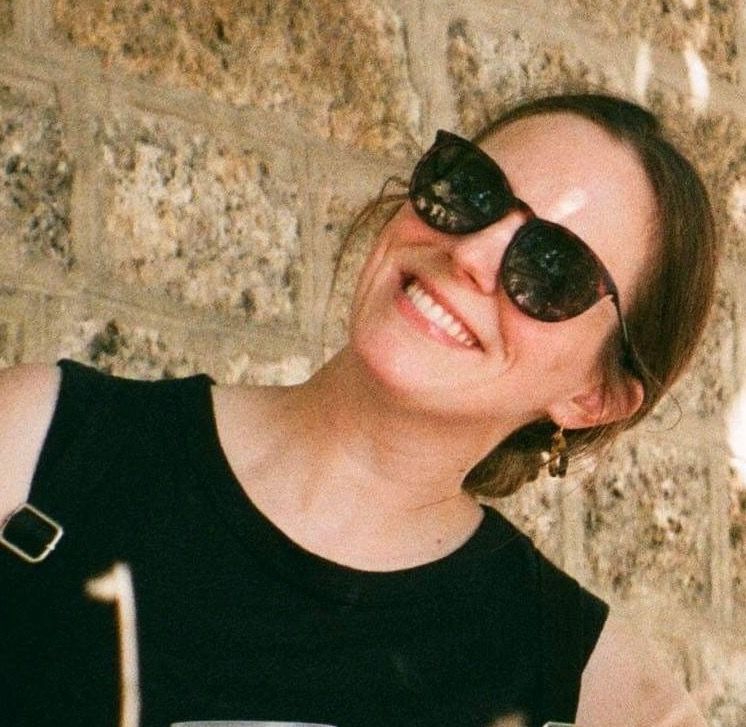The name Walt Disney conjures up a lifetime of wonder. While his name is now synonymous with animation, the storytelling visionary initially got his start as an illustrator, with a dream of becoming a newspaper cartoonist.
His life’s work, of course, far exceeded his ambitions. He eventually branched out into feature-length animated and live-action films, television shows, nature documentaries, theme parks, and merchandise, all based on his beloved — and enduring — characters.
But like many other great success stories, Disney’s journey didn’t start out so glamorous. He encountered several delays along the way, including bankruptcy, trademark issues, and even a brief service during World War I. But none of that stopped him from believing in his dream, and always encouraging others to do the same.
Throughout his life, Disney created magic for people of all ages — and he continues to do so through the remarkable legacy he left behind. Read on to learn more about the inspiring life and mind of one of the most iconic figures of the 20th century.
All our dreams can come true — if we have the courage to pursue them.
Walt Disney was born Walter Elias Disney in Chicago, Illinois, on December 5, 1901. When he was five years old, the family — including Walt, his parents, and his four siblings — moved to a farm near Marceline, Missouri. It left a mark on young Disney, and he would carry the inspiration with him forever, even paying tribute to his idyllic Midwestern boyhood when he built Disneyland’s Main Street, USA.
The Disney family moved again to Kansas City, Missouri, in 1911, and then back to Chicago in 1917. By then, Walt had begun studying art in his spare time, and started pursuing his dream job as a cartoonist, drawing pictures for his high school newspaper. In 1918, Disney’s career ambitions were briefly put on hold as he traveled to France to join the Red Cross in the Ambulance Corps during World War I.
The way to get started is to quit talking and begin doing.
Upon his return to the U.S. in 1919, Disney, still only 18 years old, moved back to Kansas City, where he got his first job at a commercial art studio. He met and befriended animator Ub Iwerks and the two quickly formed their own commercial art company. It lasted only one month, but Disney’s relationship with Iwerks would remain one of the most important in his life.
Disney found employment at another ad company and brought Iwerks with him. But Disney couldn’t tame his entrepreneurial spirit. He and Iwerks started a new film studio, Laugh-O-gram Films, producing cartoon shorts and experimenting with animation and live action in a popular silent series called the Alice Comedies. One year later, in 1923, the studio lost its financing and went bankrupt.
We keep moving forward, opening up new doors and doing new things, because we're curious. And curiosity keeps leading us down new paths.
Disney’s next move was to Los Angeles, California, where his brother Roy already lived. His plan was to try to make it as a director, and he did just that after securing a deal with Universal Pictures to make a full Alice Comedies series. Walt, the creative, and Roy, the businessman, founded the Disney Brothers Studio as a result.
I always like to look on the optimistic side of life, but I am realistic enough to know that life is a complex matter.
Disney soon recruited his old friend Iwerks to move to Los Angeles and help with animation at the new studio. The company grew, and by 1927, Disney was asked to create a new character for Universal following the success of Alice Comedies.
Together, Disney and Iwerks came up with a personality-filled bunny who was known as Oswald the Lucky Rabbit. It became Universal’s biggest animated hit. Unfortunately, by 1928, Disney and Universal’s business partnership had come to an end, and Universal kept the rights to Oswald.
You may not realize it when it happens, but a kick in the teeth may be the best thing in the world for you.
By 1928, Roy and Walt had renamed their company Walt Disney Studios. Disney and Iwerks went back to work developing a new character — a mouse that looked similar to Oswald the Lucky Rabbit.
Iwerks was the first animator to draw Mickey Mouse, and just as films started incorporating voices and music, the Disney team debuted Mickey in a film called Steamboat Willie. Over the next year, Mickey Mouse became a bona fide sensation.
I want the characters to be somebody. I don't want them just to be a drawing.
Throughout the early 1930s, as Mickey Mouse and his girlfriend Minnie exploded in popularity, several other now-classic Disney characters debuted, such as Donald Duck, Pluto, and Goofy, and Roy Disney spearheaded moneymaking merchandising opportunities based on them.
In 1937, Snow White and the Seven Dwarfs premiered. It was the first Disney-animated feature film, and as a testament to the power of Disney’s storytelling and character development, he was given an honorary Academy Award for the film: a full-size Oscar statue and seven “dwarf” statuettes.
Life is composed of lights and shadows, and we would be untruthful, insincere, and saccharine if we tried to pretend there were no shadows.
Throughout the 1940s, Walt Disney Studios released such timeless classics as Pinocchio, Fantasia, Dumbo, and Bambi. None of the films was commercially successful, however. Throughout World War II, the studio space became a military base, while the company focused on producing government-contracted films and training videos, offering Disney a lifeline in a dire financial time.
By the end of the '40s, Disney expanded into making nature documentaries, some of the first of their kind. And in the 1950s, Disney and his brother Roy successfully negotiated a deal with ABC television to produce a new show in exchange for a $500,000 investment in Disney’s next great idea — Disneyland.
I only hope that we never lose sight of one thing — that it was all started by a mouse.
Disneyland opened in July 1955, immediately drawing millions of visitors and becoming the culmination of and landmark for Disney’s whimsical, nostalgic wholesomeness.
Disney returned his focus to producing to complete Mary Poppins, which was released in 1964 and was the top-earning film that year. The success helped Disney purchase another plot of land — 27,000 acres near Orlando, Florida, for his next theme park, Walt Disney World. Unfortunately, Disney never got to see it finished: He died in 1966. Roy Disney, however, saw it through, passing away two months after the park’s completion in 1971.
Featured image credit: © Hulton-Deutsch Collection/ CORBIS/ Corbis via Getty Images
















